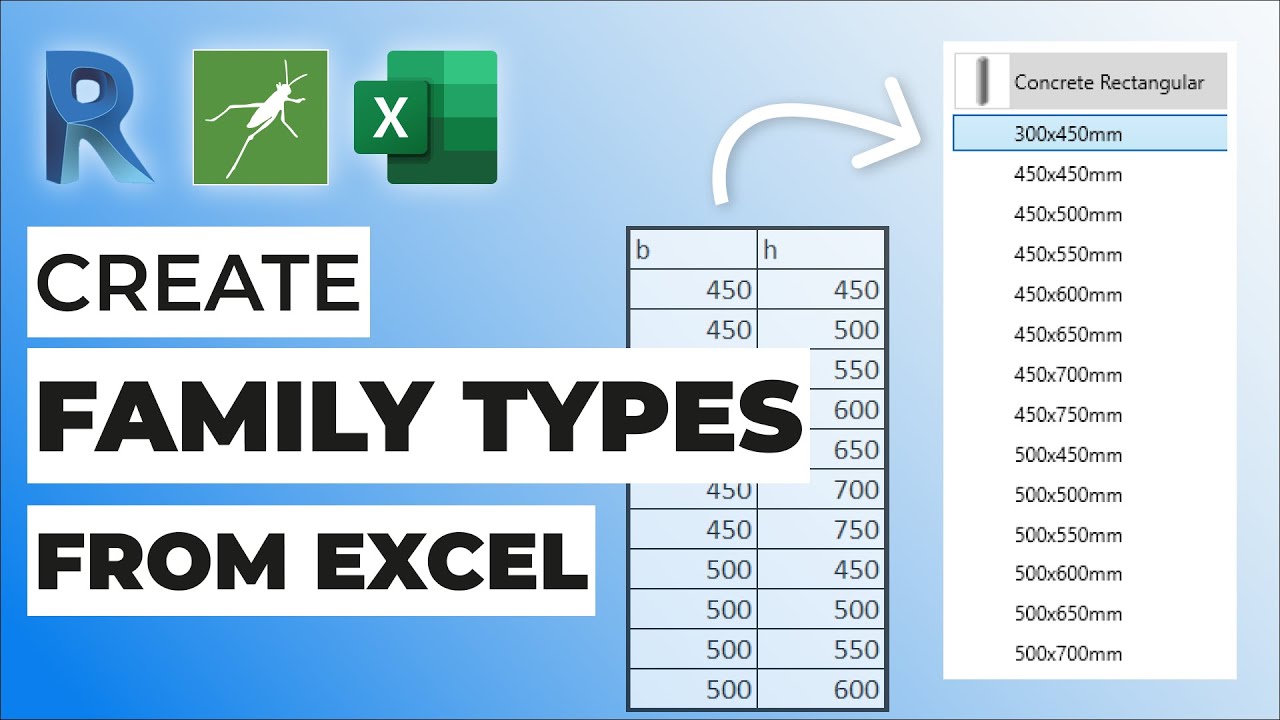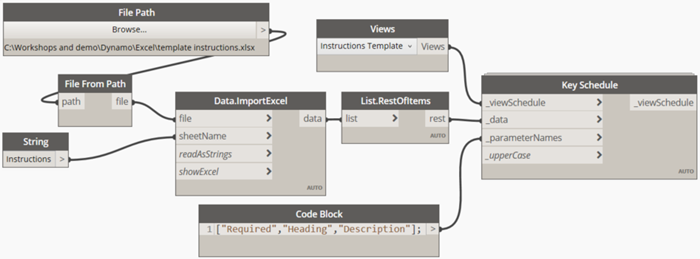Optimize Performance with Premier Revit Plugins
Wiki Article
Damaging Barriers: Excel Importation Techniques for Advanced Revit Users
Are you an advanced Revit user looking to take your abilities to the next level? In this write-up, we will show you just how to break obstacles by leveraging Excel for importation in Revit. Explore different information importation techniques and master Excel combination to enhance your Revit modeling capacities. With our pointers and tricks, you can conquer importation difficulties and end up being a true expert in using Excel for your Revit projects. Prepare yourself to master your Revit journey!Advanced Revit Users: Leveraging Excel for Importation
You can easily take advantage of Excel for importation as an advanced Revit customer. Excel is an effective tool that can considerably improve your workflow and performance in Revit. With its capacity to manage large amounts of information and carry out intricate calculations, Excel can be an important property in handling and organizing your job information.One means to utilize Excel for importation is by utilizing the "Web link Excel" attribute in Revit. This feature allows you to link an Excel spread sheet straight into your Revit project, enabling you to update and integrate information in between both programs. When dealing with timetables or tracking adjustments in your task., this can be particularly useful.
One more method to use Excel is by utilizing the "Import/Export" attribute in Revit. This attribute permits you to import and export information in between Revit and Excel, offering you the adaptability to deal with information in both programs. You can import information from Excel right into Revit to develop components such as wall surfaces, areas, or doors, and you can additionally export information from Revit to Excel for more evaluation or coverage.

Exploring Information Importation Methods in Revit Using Excel
Exploring how to import data from Excel into Revit offers efficient methods for integrating information. When you import data from Excel, you can seamlessly transfer information such as area timetables, product lists, and devices data into your Revit task. This procedure allows you to conserve time and initiative by staying clear of hands-on information entrance.To import information from Excel into Revit, you can use the "Import/Export" feature. This feature allows you to map the Excel information areas to the equivalent Revit criteria, making certain that the info is properly assigned within the model. By choosing the suitable import options, you can regulate exactly how the data is imported and just how it connects with your job.
Another approach for importing data from Excel right into Revit is by using Eager beaver. With Dynamo, you can produce customized manuscripts that import data from Excel and adjust it within your Revit job.
Understanding Excel Combination for Advanced Revit Modeling
One vital technique is importing data from Excel spread sheets straight right into your Revit model. With a few basic actions, you can map the Excel columns to the equivalent Revit parameters and import the information accurately.An additional beneficial technique is exporting information from Revit to Excel. This enables you to extract info from your design, such as routines or material amounts, and examine it in Excel making use of solutions, graphes, or other powerful tools. By leveraging the capacities of Excel, you can do complicated estimations, develop customized reports, and gain beneficial insights into your task.
Along with information transfer, Excel integration can automate repetitive jobs in Revit. By creating macros or scripts in Excel, you can automate procedures like developing sights, creating sheets, or applying typical family members - import excel into revit. This not only conserves time but additionally makes sure uniformity across your project
To master Excel assimilation in Revit, it is critical to comprehend the data framework and exactly how Revit engages with Excel. By familiarizing yourself with the readily available devices and techniques, you can unlock the full possibility of Excel assimilation and take your Revit modeling to the following degree.
Overcoming Importation Challenges: Excel Techniques for Revit Specialists
When getting rid of importation difficulties, it's important to be acquainted with effective Excel methods that can profit professionals in Revit. As an advanced Revit customer, you comprehend the significance of effortlessly importing data from Excel into your projects.
Another valuable method is utilizing the "Transpose" feature in Excel. This enables you to transform information from rows to columns or the other way around. When importing data into Revit, this can be particularly handy when you have data in a vertical format in Excel, yet you need it to be in a horizontal style in Revit.
In addition, using Excel formulas such as VLOOKUP and INDEX-MATCH can considerably aid in mapping data from Excel to Revit. These formulas enable you to look for particular values in Excel and retrieve equivalent information from another column. When importing huge datasets into Revit., this can save you time and initiative.
Excel Information Importation Advice for Advanced Revit Users
By acquainting on your own with effective Excel ideas and methods, you can enhance your information importation process as an innovative user of Revit. Excel is an effective tool that can substantially promote the importation of information right into Revit, saving you time and raising your performance. One beneficial tip is to utilize the "Text to Columns" feature in Excel to divide information into different columns based on a delimiter. When you have data in a solitary column that needs to be divided right into several columns in Revit, this can be particularly helpful. Furthermore, using Excel's "Paste Special" attribute permits you to paste information from Excel into Revit while preserving format, such as cell shade or font style. This can be specifically beneficial when importing information that calls for details format in Revit. One more useful technique is to utilize Excel's "Change and locate" function to promptly make modifications to your information before importing it into Revit. For instance, you can quickly change certain text or characters with others, saving you the moment and initiative of by hand editing and enhancing read what he said the data in Revit. By utilizing these Excel tricks and tips, you can enhance your information importation procedure and come to be also more skillful being used Revit.
Verdict
You have now discovered important techniques for importing data from Excel right into Revit as a sophisticated user. By leveraging the power of Excel combination, you can enhance your modeling process and conquer any kind of importation tests that may emerge. With these techniques and ideas, you will certainly have the ability to understand information importation and improve your Revit abilities. Go in advance, damage those obstacles and stand out in your Revit tasks!
When importing information into Revit, this can be especially useful when you have data in an upright format in Excel, but you require it to be in a straight layout in Revit.
Additionally, making my site use of Excel formulas such as VLOOKUP and INDEX-MATCH can greatly help in mapping data from Excel to Revit. In addition, utilizing Excel's "Paste Unique" attribute allows you to paste data from Excel right into Revit while maintaining formatting, such as cell shade or font design.
Report this wiki page